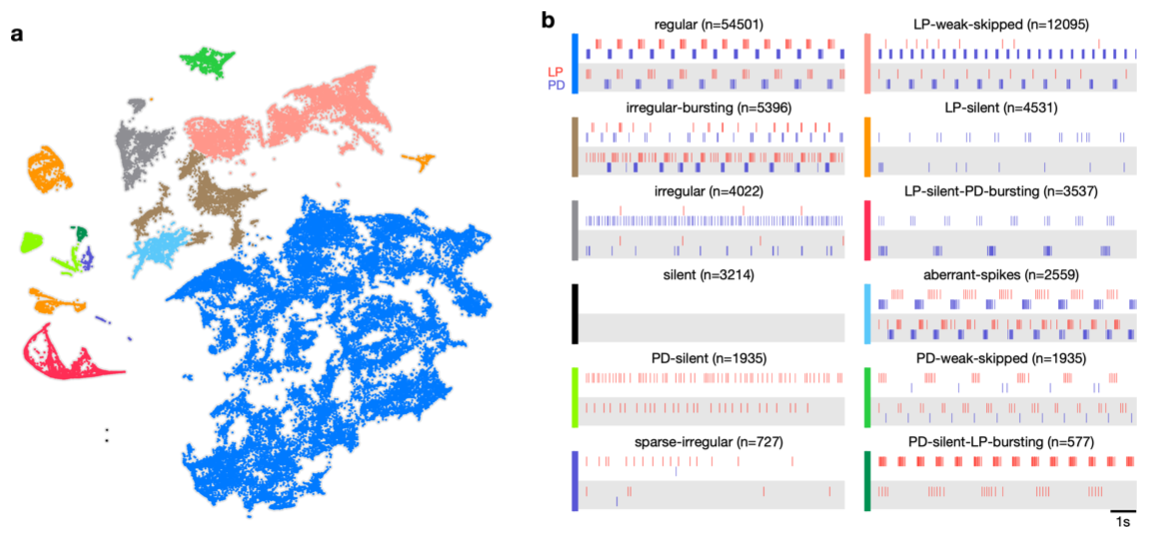This repository contains code to reproduce every figure in
Mapping circuit dynamics during function and dysfunction
You will need MATLAB.
Download the following repositories and add them to your MATLAB path:
https://github.com/sg-s/stg-embedding
https://github.com/sg-s/srinivas.gs_mtools
https://github.com/sg-s/crabsort
https://github.com/KlugerLab/FIt-SNE
The raw data is >30TB and getting it into your hands is not easy. Instead we provide reduced data consisting of spiketimes, metadata and various annotations. This should allow you to reproduce every figure in the paper.
To get the data, download it from Zenodo.
- First, download the code and add to path (see above).
- Then, download the data and put it in a folder called "reduced-data" within your "stg-embedding" folder. You will have to create this if needed.
- Then, navigate to the
paper-figuresfolder and run any script to generate that figure. For example, to generate Figure 2, run:fig_embedding.
GPL v3

